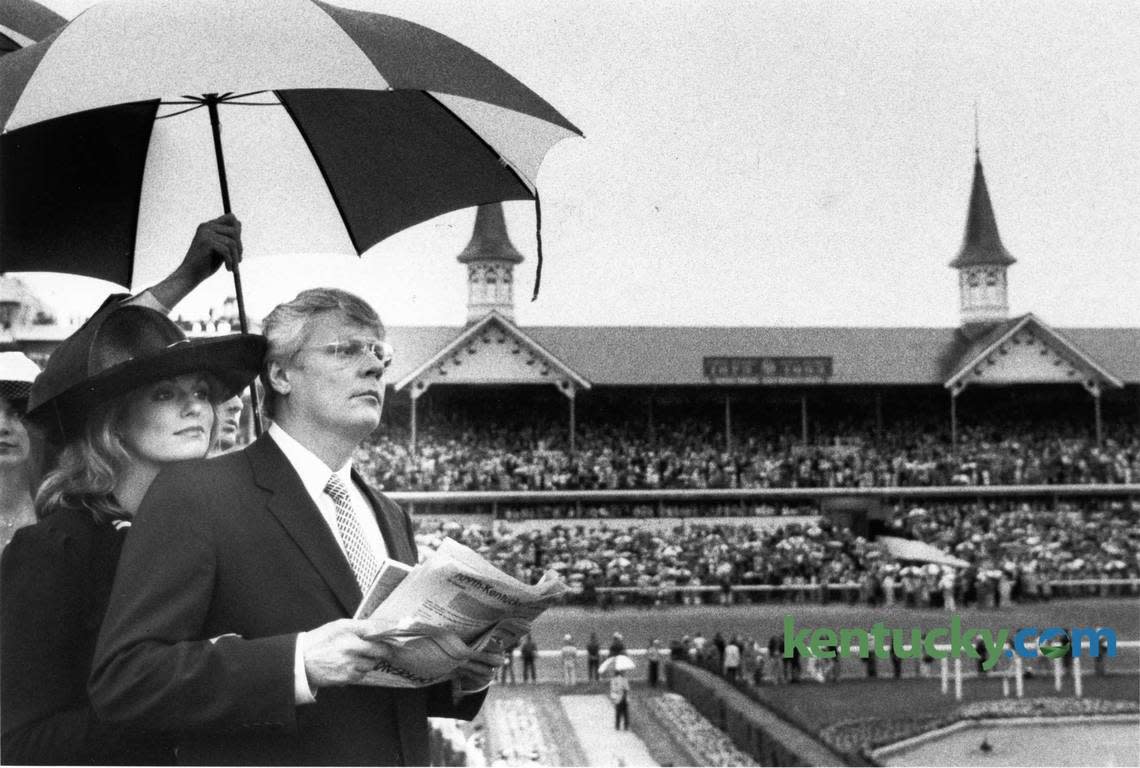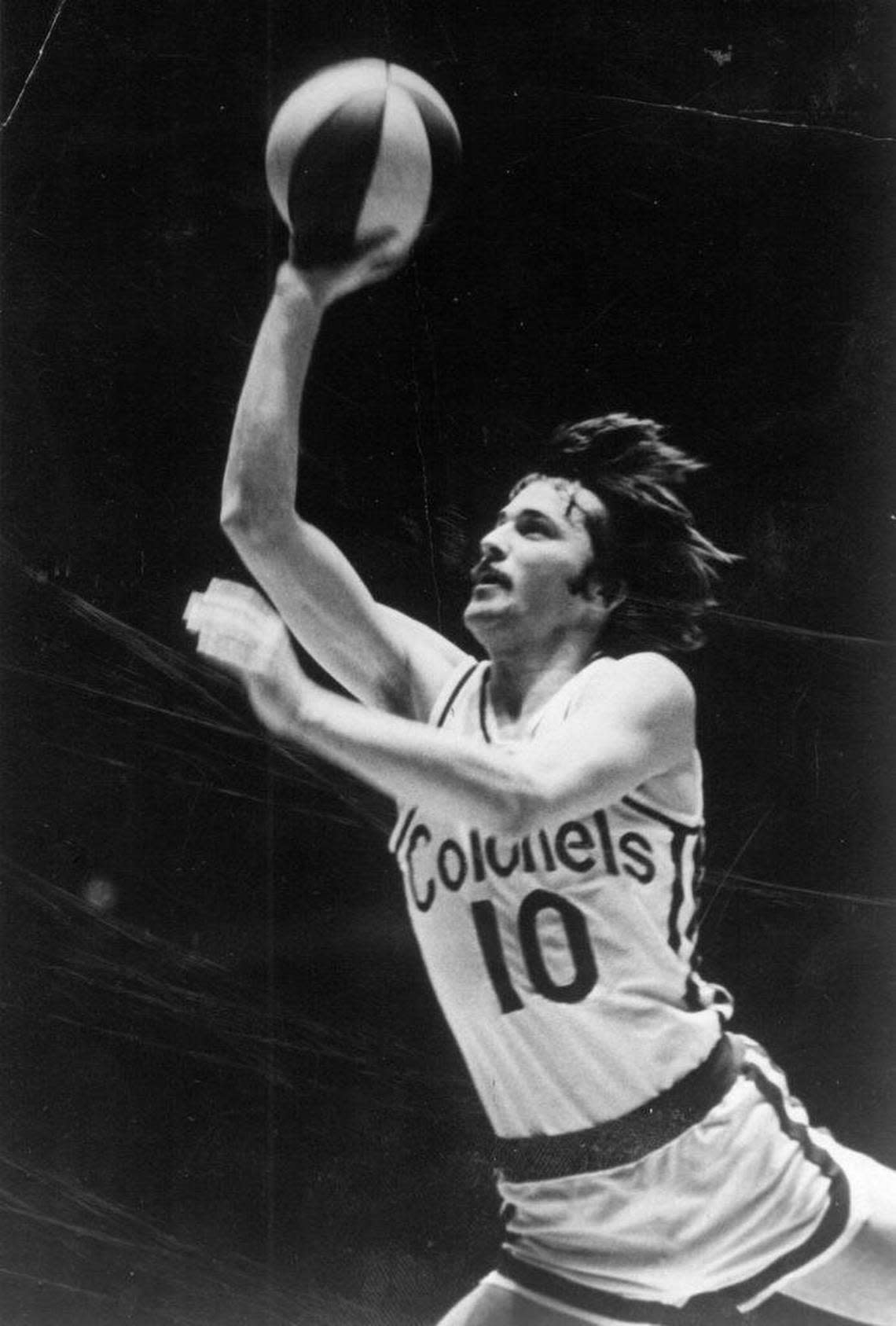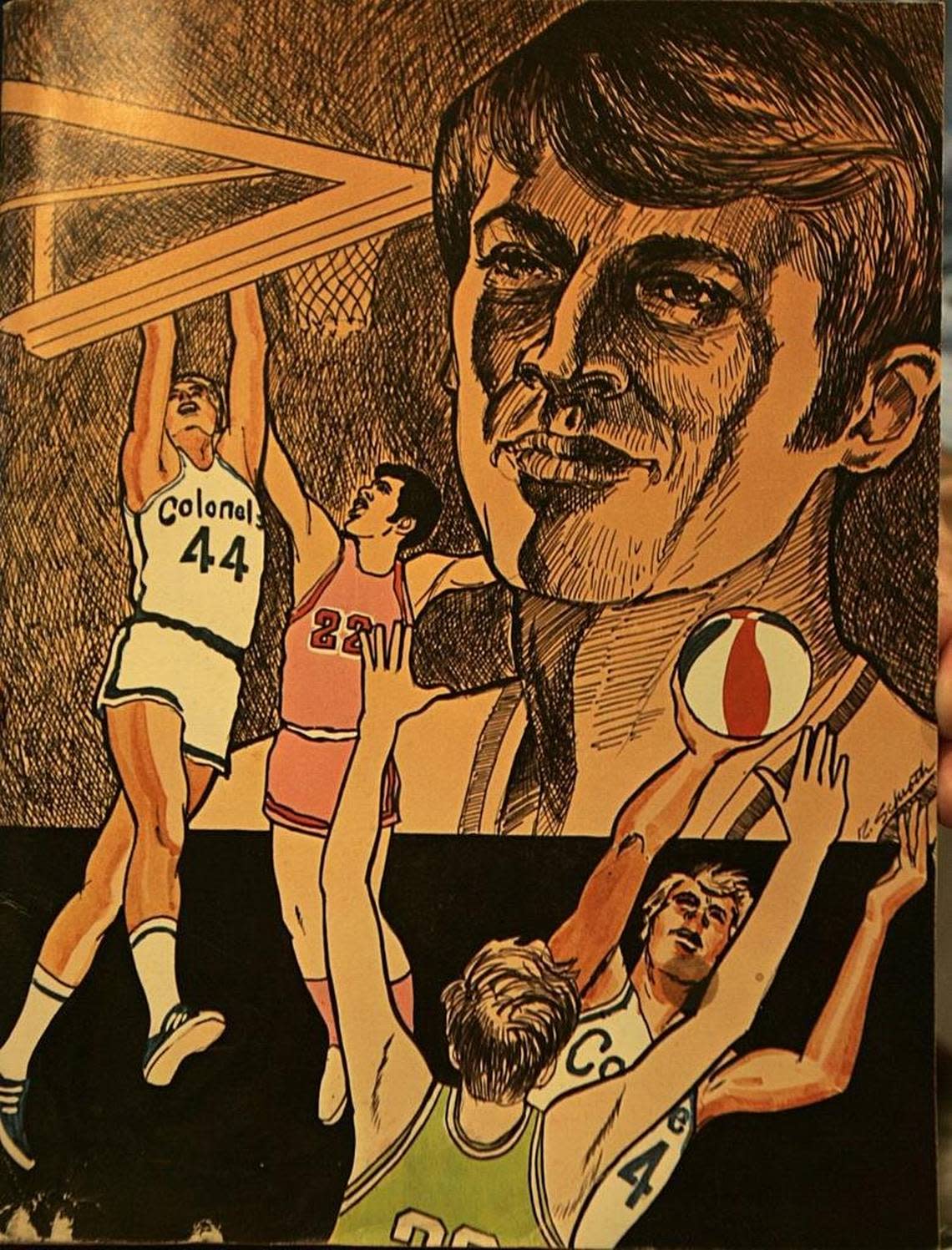John Y. Brown Jr. played a big, often colorful, role in Kentucky sports
John Y. Brown Jr. may have made his biggest impacts in the realms of business and politics, but his role in the sports history of Kentucky is both large and colorful.
Before Brown Jr. — whose children announced Tuesday that he had died at age 88 — served as Kentucky governor (1979-83), he was team owner when the American Basketball Association’s Kentucky Colonels gave our state its only major-league, professional sports championship in 1975.
During his time as governor, Brown Jr. initiated one of the commonwealth’s largest sports controversies of the 1980s. He publicly tried in the summer of 1981 to force the University of Kentucky to oust its head football coach, Fran Curci, and replace him with iconic former NFL head man George Allen.
Brown Jr. was also governor at the time of the massively hyped 1983 showdown between Joe B. Hall’s Kentucky Wildcats and Denny Crum’s Louisville Cardinals in the NCAA Tournament round of eight — the first men’s basketball meeting between the teams in 24 years.

Famously, Brown Jr. wore a sport coat and baseball cap to the game that were each half UK blue and half U of L red.
“I think more people remember that coat than remember anything I did as governor,” Brown Jr. told the Herald-Leader in 2012.
Owning a champion
Brown Jr.’s involvement with professional basketball in the commonwealth began during the 1969-70 season when he was among a group of five Louisville movers and shakers that purchased the local ABA franchise, the Kentucky Colonels.
The new ownership, Kentucky Fried Chicken magnate Brown; health-care executives David Jones and Wendell Cherry; banker David Grissom; and trade school baron Stuart Jay, invested the money sufficient for the Colonels to sign college stars Dan Issel (Kentucky) and Artis Gilmore (Jacksonville).
Paired with the team’s existing star, sharp-shooting guard Louie Dampier (another UK product), the Colonels had a nucleus of such talent that Kentucky became one of the best professional basketball teams in any league, the more-established NBA included.

However, even as the Colonels gained in popularity, the team was losing money. So in 1973, the “group of five” owners sold the team to investors who planned to relocate the franchise to Cincinnati.
“We had a shareholders meeting, and we decided the thing just didn’t have a viable future,” Brown Jr. told the Herald-Leader in 1996. “We had given it two, three years. We were losing money, so we sold it to the group from Cincinnati. I totally agreed with that decision.”
However, when Brown Jr.’s then 10-year-old son, John Y. Brown III, learned about the sale of the team, he was crushed. The little boy made a tearful plea to his dad to get the Colonels back.
“When your son looks at you like you are being disloyal, it tends to affect your thinking,” Brown Jr. said in 1996.
Against his better business judgment, Brown Jr. said in 1996, he went back to the Cincinnati group that had bought the Colonels and began to “un-negotiate” the deal. He eventually succeeded, though he had to agree to have the team play some games in Cincinnati’s Riverfront Coliseum.
With the team staying in Kentucky, Brown Jr. sought a different way to market the Colonels. He installed his then-wife, Ellie, as the team’s owner of record and appointed an all-female board of directors.
A very good decision made by the Ellie Brown-led front office came when the Colonels hired as head coach for 1974-75 a Milwaukee Bucks assistant who was then on the front end of what remains a decades-long career in basketball.
Hubie Brown coached the Colonels to their one and only league championship in 1975.
However, even at the moment of their greatest triumph on the court, the Colonels were not a success at the cash register. Published reports at the time put the team’s loss at $500,000 a year. Brown Jr. said in 1996 it was closer to $1 million a year.
To close the deficit, Brown Jr. sold Issel’s contract to the Baltimore Claws for a reported $700,000.
The trade set off a firestorm. Issel was, arguably, the most popular public figure in Kentucky at the time. Phones in the Colonels’ offices rang off the hook with ticket cancellations. Attendance the following season plunged.
“It killed me. Just killed me,” Brown Jr. said in 1996 of the Issel trade. “But what were we supposed to do? We weren’t selling Dan for commercial gain. We just wanted to stop losing money.”

After one more season, the Browns put the Colonels up for sale in the spring of 1976. Unfortunately for pro basketball adherents in the commonwealth, an NBA-ABA merger was then in the works. With the Colonels’ franchise ownership in limbo, Kentucky was not one of the four ABA teams invited to join the NBA.
Brown Jr. got $3 million for folding his franchise, then turned around and bought into the Buffalo Braves of the NBA for half that amount. Once Brown acquired the Buffalo franchise, many disappointed Kentucky Colonels fans hoped he would move the team to Louisville.
“When I got the Braves, I made some noise about moving that team to Louisville,” Brown Jr. said in 1996. “And you know how many calls I got from (interested Louisville businessmen)? Not one.”
Instead, Brown later swapped the Buffalo franchise for ownership of the Boston Celtics. In the short time (1978-79) Brown owned the Celtics, his insistence on making trades without consulting with Red Auerbach made a lifetime enemy of the venerable Celtics general manager.
In a March 1987 interview with the Harvard Business Review, Auerbach said of Brown Jr. “He had a tremendous ego, like he knew it all.”
Trying to fire UK’s coach
In the summer of 1981, “The Cats’ Pause,” the UK sports specialty publication, rocked the commonwealth when it broke the news that the Kentucky governor, Brown Jr., was seeking to force the University of Kentucky to fire head football coach Fran Curci.
Brown Jr. even had a replacement lined up — George Allen, who had coached the Los Angeles Rams and Washington in the NFL. “An opportunity like George Allen doesn’t come along very often,” Brown Jr. said then.
A UK alumnus and passionate Wildcats sports backer, Brown Jr. had been a patron of Curci early in the coach’s Kentucky tenure (1973-81). However, that changed after the football coach declined to endorse Brown Jr. during his whirlwind and, ultimately successful, run for governor in 1979.
Otis Singletary, then the UK president, resisted Brown Jr.’s attempt to orchestrate a football coaching change on the grounds that personnel decisions at the university needed to be made by the school’s chain of command, not in the governor’s office.
“Doc is a good friend of mine,” Brown Jr. said that summer of Singletary. “But I’d like to turn him over my lap and spank him real good and tell him to let his governor have a football team over there.”
Once it became apparent that UK was not going to oust Curci and hire Allen, Brown Jr. said “the establishment has won out. I guess we can look forward to a good tradition of 30 years of losing. It didn’t work out and I accept that.”
Given a summertime reprieve, Curci coached Kentucky to a 3-8 record in 1981. He was then fired after the season. Rather than Allen, UK chose Maryland’s Jerry Claiborne, a Kentucky alumnus, as its next head football coach.
In his final year as governor, the picture of Brown Jr. in his half blue/half red sport coat would become the preeminent, lasting image of the 1983 NCAA Tournament meeting between UK and U of L.
Brown Jr.’s influence likely played a role in UK and U of L launching an annual basketball series the ensuing season — one that continues to this day.
